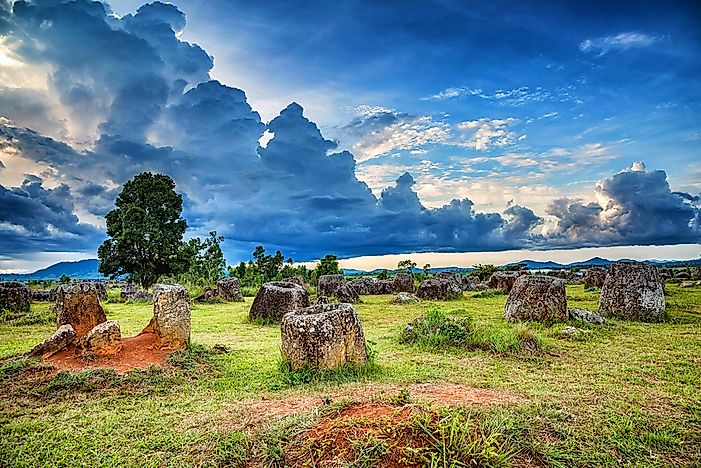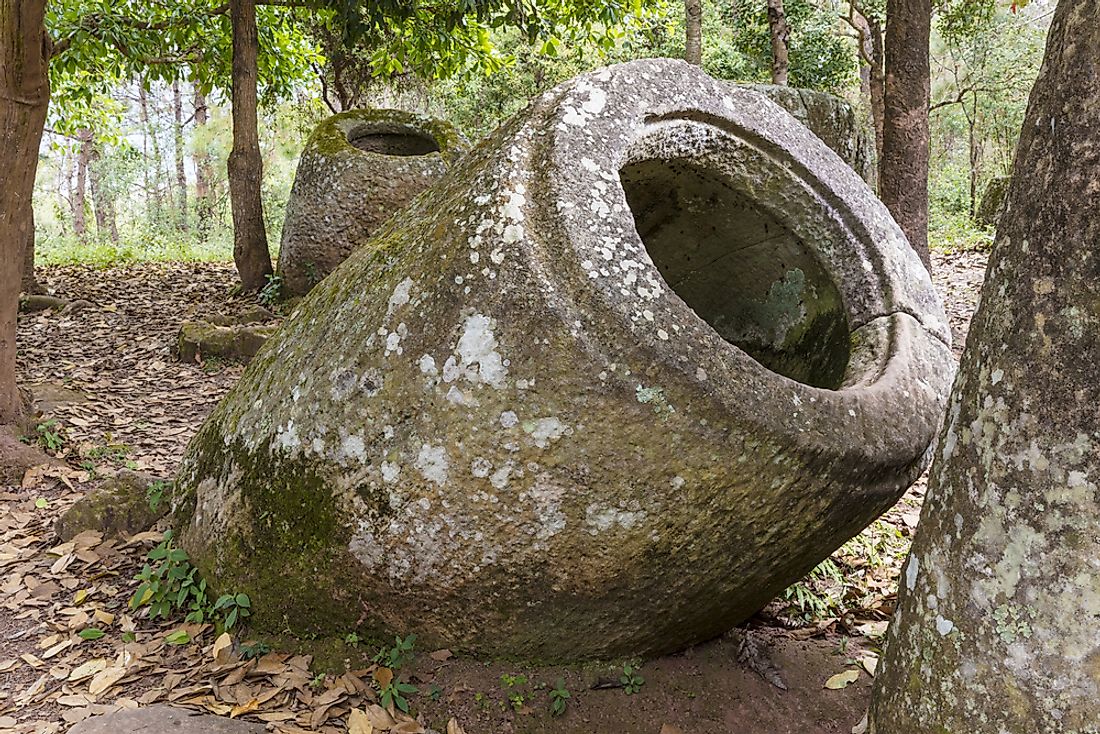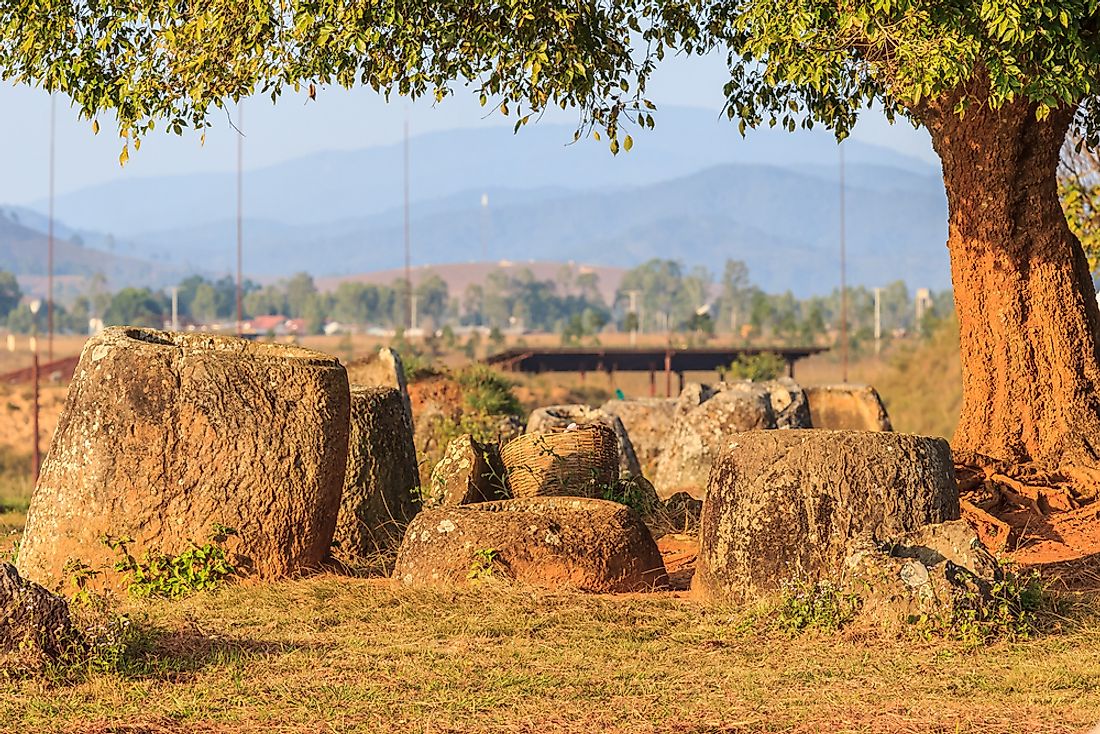Plain Of Jars: Unique Places Around The World
Plain of Jars is a large archaeological landscape found in Laos.

The Plain of Jars site.
The Plain of Jars is perhaps one of the most prolific sites in Laos. From overall aesthetics to the essential details, the plain symbolizes an oasis of ancient artifacts amid threats of a diminishing history around the region. Apart from being an established sanctuary, the Plain of Jars contributes majorly towards the economy. Although this nature reserve stands out as a major positive contributor towards the livelihood, it most certainly faces significant threats which may require future consideration.
5. Description

The Plain of Jars is located far in the northern regions of Annamese Cordillera, which is one of the largest mountain range in Southeast Asia. The archaeological landscape consists of various stones shaped in the form of jars. These beautiful jars are carefully arranged in a cluster-like manner. The distribution of the jars spans both the valley as well as the foothills in the mid-plain of Laos. It was not until 1930 that Madeleine Colani, a famous French researcher established that the jars came as a result of ancient burial practices. Excavation projects since then have confirmed this.
4. Tourism
Like many prehistoric sites, the Plain of Jars attracts many tourists from around the globe every year. This translates to a significant economic value regarding foreign exchange and other aspects such as international relationships. The breathtaking landscape acts as a distinct region where tourists come to quench their thirst for new experiences. The government has equally invested in the region by ensuring a safe and a convenient passage to the tourist site. There is a bus and air travel to the regions surrounding the plains. Although tourism in the region is still being fostered due to the bombings which occurred between 1964 to 1973, there are profound measures which have been put to restore the pride of the Plain of Jars.
3. Uniqueness
Even though there is substantial evidence to ascertain the origin of the jars in the region, the jars continue to carry an air of mystery. There is no clear fact that shows the maker of the jars and their reason. The bizarre collection of scattered jars in the plain is one of the unique sites one’s eyes meet upon visiting the plain. The presence of five different types of stones within the wall structure of the jars is also a startling occurrence that further serves to explore the uniqueness of the jars.
2. Habitat
The jars are mostly located in a plain which mostly has grass and scattered trees growing around them. Although the most attractive features about the plain are the jars, wildlife is also an occasional occurrence as small animals can be seen on the plains.
1. Threats

Between the years of 1964 to 1973, the U.S. Air Force bombed the Plain of Jars heavily in an effort against the communist forces of Pathet Lao and North Vietnam. A staggering amount of these bombs never exploded, and remain an active deadly threat in the area. As such, sightseeing can only be done on paths which have been clearly indicated. A program titled "Safeguarding the Plain of Jars" is a joint effort between Laos and the United Nations, with the intention to make the Plain of Jars safe enough to be a UNESCO Heritage Site.
~News courtesy of World Atlas~
Plain of Jars is a large archaeological landscape found in Laos.

The Plain of Jars site.
The Plain of Jars is perhaps one of the most prolific sites in Laos. From overall aesthetics to the essential details, the plain symbolizes an oasis of ancient artifacts amid threats of a diminishing history around the region. Apart from being an established sanctuary, the Plain of Jars contributes majorly towards the economy. Although this nature reserve stands out as a major positive contributor towards the livelihood, it most certainly faces significant threats which may require future consideration.
5. Description

The Plain of Jars is located far in the northern regions of Annamese Cordillera, which is one of the largest mountain range in Southeast Asia. The archaeological landscape consists of various stones shaped in the form of jars. These beautiful jars are carefully arranged in a cluster-like manner. The distribution of the jars spans both the valley as well as the foothills in the mid-plain of Laos. It was not until 1930 that Madeleine Colani, a famous French researcher established that the jars came as a result of ancient burial practices. Excavation projects since then have confirmed this.
4. Tourism
Like many prehistoric sites, the Plain of Jars attracts many tourists from around the globe every year. This translates to a significant economic value regarding foreign exchange and other aspects such as international relationships. The breathtaking landscape acts as a distinct region where tourists come to quench their thirst for new experiences. The government has equally invested in the region by ensuring a safe and a convenient passage to the tourist site. There is a bus and air travel to the regions surrounding the plains. Although tourism in the region is still being fostered due to the bombings which occurred between 1964 to 1973, there are profound measures which have been put to restore the pride of the Plain of Jars.
3. Uniqueness
Even though there is substantial evidence to ascertain the origin of the jars in the region, the jars continue to carry an air of mystery. There is no clear fact that shows the maker of the jars and their reason. The bizarre collection of scattered jars in the plain is one of the unique sites one’s eyes meet upon visiting the plain. The presence of five different types of stones within the wall structure of the jars is also a startling occurrence that further serves to explore the uniqueness of the jars.
2. Habitat
The jars are mostly located in a plain which mostly has grass and scattered trees growing around them. Although the most attractive features about the plain are the jars, wildlife is also an occasional occurrence as small animals can be seen on the plains.
1. Threats

Between the years of 1964 to 1973, the U.S. Air Force bombed the Plain of Jars heavily in an effort against the communist forces of Pathet Lao and North Vietnam. A staggering amount of these bombs never exploded, and remain an active deadly threat in the area. As such, sightseeing can only be done on paths which have been clearly indicated. A program titled "Safeguarding the Plain of Jars" is a joint effort between Laos and the United Nations, with the intention to make the Plain of Jars safe enough to be a UNESCO Heritage Site.
~News courtesy of World Atlas~
